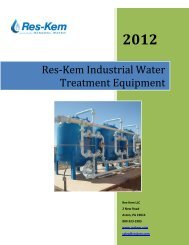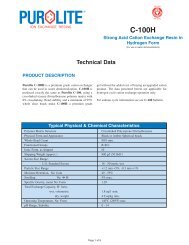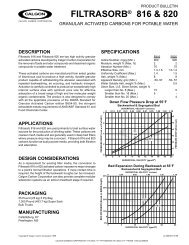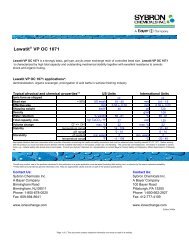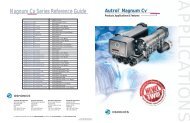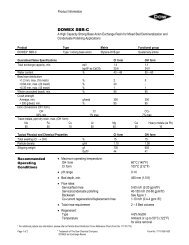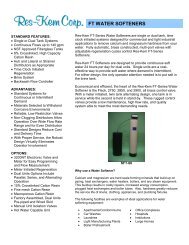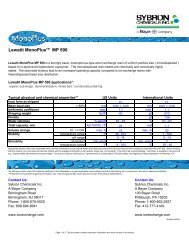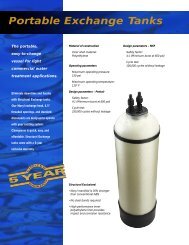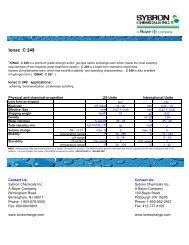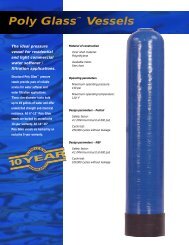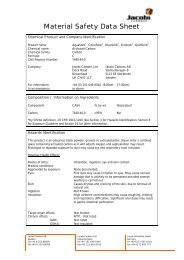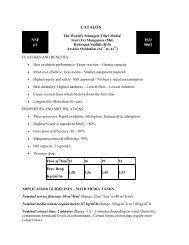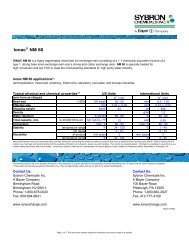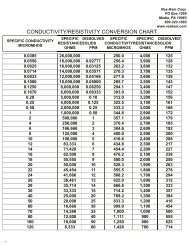DOWEX Ion Exchange Resins WATER CONDITIONING MANUAL
DOWEX Ion Exchange Resins WATER CONDITIONING MANUAL
DOWEX Ion Exchange Resins WATER CONDITIONING MANUAL
You also want an ePaper? Increase the reach of your titles
YUMPU automatically turns print PDFs into web optimized ePapers that Google loves.
The UPCORE Counter-Current Regeneration System<br />
8.4 UPCORE and the Layered Bed Anion Option<br />
A layered bed anion configuration is a highly cost-effective way to take advantage of the high exchange<br />
capacity of the weak base anion resin to remove free mineral acidity and high molecular weight dissolved<br />
organic species. This top layer of weak base resin serves to protect and optimize the capacity and service<br />
life of the strong base anion resin for silica removal. Only a single vessel is needed, and the vessel can<br />
be designed without a middle plate (Figure 19) because the separation of the resins is ensured by the<br />
difference in the particle size distribution and resin density. The weak base naturally floats on top of the<br />
strong base resin.<br />
Furthermore, the UPCORE system can be installed in layered bed configurations without major<br />
modification to existing vessels, and it is possible to readily optimize the ratio of layered resin volumes in<br />
the event of changes in the raw water supply source.<br />
Figure 19. Vessel design without a middle plate.<br />
LAYERED BED<br />
Freeboard<br />
Weak functional resin<br />
Strong functional resin<br />
8.5 Comparison with other Regeneration Systems<br />
Floating inert<br />
<strong>Ion</strong> exchange regeneration technology has developed over the years from the early co-current<br />
regenerated systems to counter-current block systems and counter-current packed bed technology,<br />
including the Dow UPCORE system. The purpose of this review is to describe the different technologies<br />
and to compare their characteristics and performance.<br />
8.5.1 Co-current Regeneration System<br />
This is the simplest system where a resin is regenerated in the same downwards direction as the service<br />
flow (Table 12). The vessel has a large freeboard to allow expansion of the resin bed when backwashing<br />
is carried out to remove suspended solids and resin fines. Co-current regeneration systems will generally<br />
produce water of much lower quality than counter-current systems, with typical leakage values<br />
approximately 10 times higher.<br />
Table 12. Characteristics of co-current regeneration system.<br />
Advantages Disadvantages<br />
Proven process High chemical cost<br />
Reliable Lower water quality<br />
Easy resin cleaning Lower productivity<br />
<strong>DOWEX</strong> <strong>Ion</strong> <strong>Exchange</strong> <strong>Resins</strong> 43 Water Conditioning Manual



